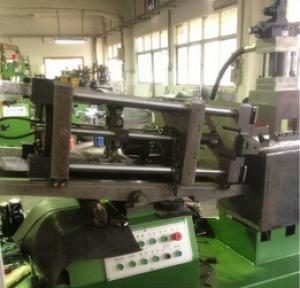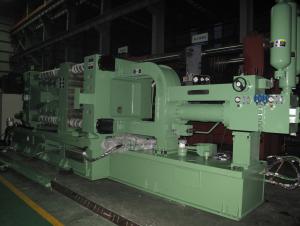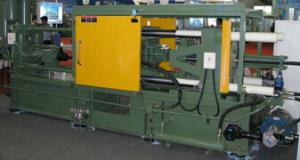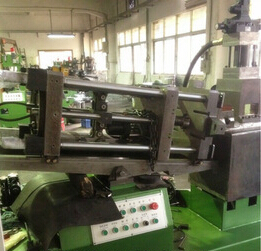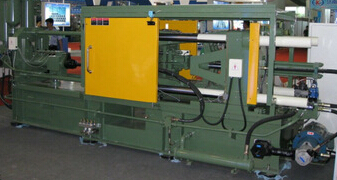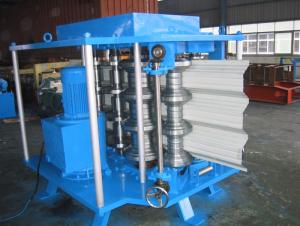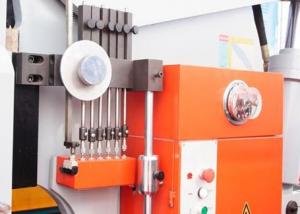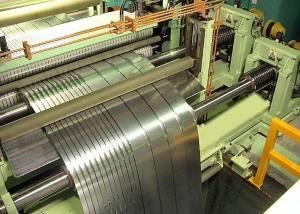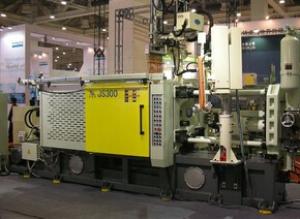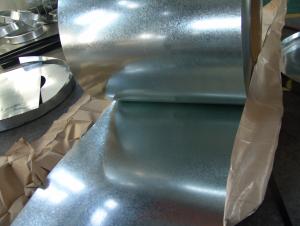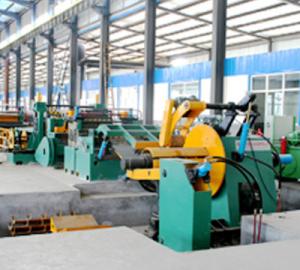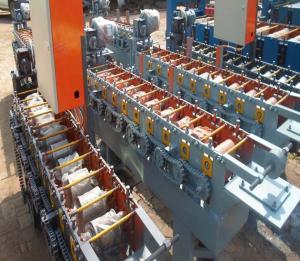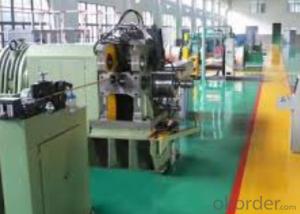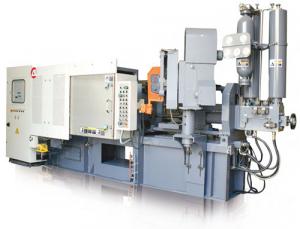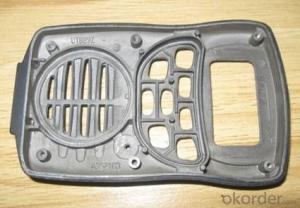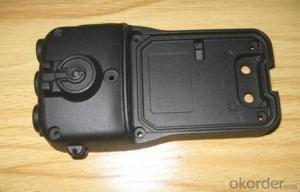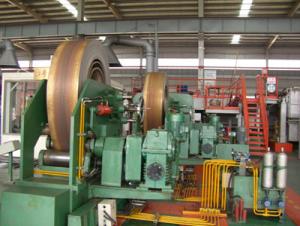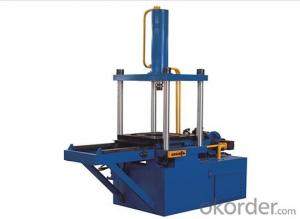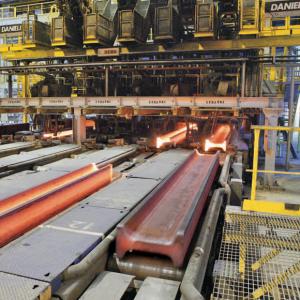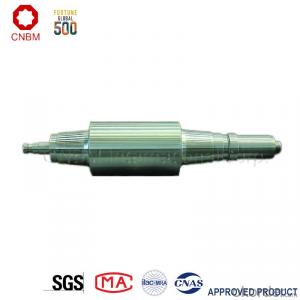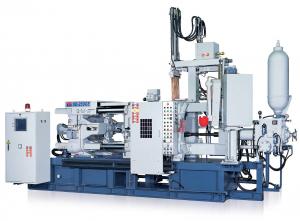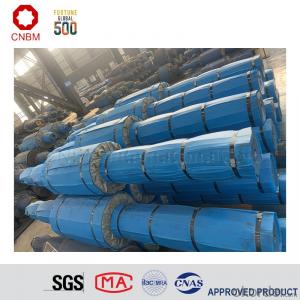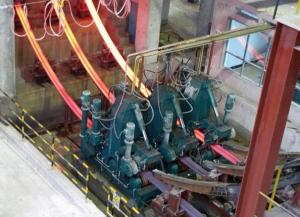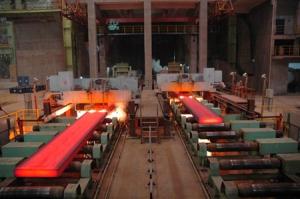Aluminum Pressure Die Casting Machine
OKorder Service Pledge
Quality Product, Order Online Tracking, Timely Delivery
OKorder Financial Service
Credit Rating, Credit Services, Credit Purchasing
You Might Also Like
KS Series High-equipped Die Casting Machine
Specifications
1.Competitive price and high quality,
2.More convenient and safety
3.High shot speed
4.Shorter pressure setting up time
- Q: Can metal casting machinery be used for the production of valve components?
- Yes, metal casting machinery can be used for the production of valve components. Metal casting processes such as sand casting, investment casting, and die casting can all be employed to manufacture valve components with precision and consistency. These processes allow for the creation of complex shapes and intricate designs, making them suitable for producing various valve components such as bodies, discs, stems, and seats.
- Q: What are the different types of surface roughness inspection methods used in metal casting machinery?
- There are several different types of surface roughness inspection methods used in metal casting machinery. These methods are employed to measure the roughness of the surface of a metal casting and ensure that it meets the required specifications. Some of the commonly used surface roughness inspection methods in metal casting machinery include: 1. Contact Profilometry: This method involves the use of a profilometer, which is a device that uses a stylus to measure the surface roughness of the metal casting. The stylus is moved across the surface, and its movements are recorded to determine the roughness. 2. Non-contact Profilometry: This method uses optical techniques to measure the surface roughness without making direct contact with the metal casting. It utilizes laser or white light interferometry to create a three-dimensional image of the surface, which is then analyzed to determine the roughness. 3. Surface Roughness Comparators: Surface roughness comparators are physical standards that have known roughness values. They are used as a reference to visually compare the roughness of a metal casting surface. Typically, these comparators have a series of surfaces with varying degrees of roughness. 4. Roughness Measurement Instruments: There are various handheld instruments available that are specifically designed to measure surface roughness. These instruments use different techniques, such as stylus-based or optical measurement, to provide accurate and precise roughness measurements. 5. Visual Inspection: Visual inspection is a common method used to assess the surface roughness of metal castings. It involves visually examining the surface and identifying any imperfections or irregularities. While this method is subjective, it is often used as a preliminary inspection before employing more precise measurement techniques. 6. Surface Roughness Standards: Surface roughness standards are reference samples with known roughness values. These standards are used to calibrate and verify the accuracy of measurement instruments. By comparing the roughness of a metal casting to the surface roughness standards, the quality of the casting can be determined. In conclusion, surface roughness inspection methods used in metal casting machinery include contact and non-contact profilometry, surface roughness comparators, roughness measurement instruments, visual inspection, and surface roughness standards. These methods are crucial in ensuring that metal castings meet the required surface roughness specifications and are of high quality.
- Q: What is the role of cleaning and finishing equipment in metal casting machinery?
- The role of cleaning and finishing equipment in metal casting machinery is crucial for producing high-quality castings. After the casting process, the metal parts are often covered in impurities such as sand, scale, or other contaminants. Cleaning equipment, such as shot blasting machines or vibratory tumblers, is used to remove these impurities and ensure a clean surface for subsequent finishing processes. Cleaning equipment also helps to improve the overall appearance of the castings by removing any surface defects or rough edges. This is particularly important for castings that require a smooth and polished finish, as any imperfections left on the surface can affect the final product's aesthetics and functionality. Finishing equipment, on the other hand, is used to enhance the surface properties and improve the overall quality of the castings. This equipment includes tools like grinders, sanders, or polishing machines, which are employed to remove any remaining burrs, sharp edges, or rough surfaces. Finishing equipment can also be used to achieve specific surface textures or decorative patterns, depending on the desired end result. In addition to improving the appearance and surface quality, cleaning and finishing equipment also play a vital role in the performance and longevity of the castings. By removing impurities and smoothing out any irregularities, these processes help to ensure that the castings meet the required specifications and standards. This is particularly important for applications where the castings will be subjected to heavy loads, high temperatures, or corrosive environments. Overall, the role of cleaning and finishing equipment in metal casting machinery is to enhance the quality, functionality, and aesthetics of the castings. By removing impurities and refining the surface properties, these processes contribute to the production of high-quality castings that meet the desired requirements and exceed customer expectations.
- Q: How does metal casting machinery handle the removal of burrs and flashes from the castings?
- Various processes and techniques are utilized by metal casting machinery to effectively remove burrs and flashes from castings. Burrs and flashes are unwanted projections or excess material that can occur during the casting process. Mechanical deburring is a commonly employed method for eliminating burrs and flashes. This method involves the utilization of specialized machinery like deburring machines or tumblers. The castings are placed into these machines, and abrasive materials or brushes are utilized to eradicate the burrs and flashes. By programming the machines to target specific areas of the castings that require deburring, precise and consistent results can be achieved. Another technique employed is hand deburring, where skilled operators manually eliminate the burrs and flashes using handheld tools such as files, grinders, or sandpaper. This method is typically utilized for smaller or more intricate castings that necessitate a more delicate approach. In certain cases, a combination of both mechanical and hand deburring may be utilized to achieve the desired outcomes. This approach permits greater control and flexibility when addressing different types of burrs and flashes. Moreover, advanced metal casting machinery incorporates automated deburring systems. These systems are designed to detect and eliminate burrs and flashes during the casting process itself, minimizing the need for additional deburring operations. This not only enhances efficiency but also ensures consistent quality and reduces the risk of damage to the castings. In conclusion, metal casting machinery utilizes a variety of techniques to effectively remove burrs and flashes from castings. The choice of method depends on factors such as the size, complexity, and material of the castings, as well as the desired level of precision and efficiency.
- Q: What are the safety features in modern metal casting machinery?
- Modern metal casting machinery is equipped with various safety features to ensure the well-being of operators and prevent accidents. Some of these features include emergency stop buttons, safety interlocks, guards, and shields to protect against moving parts and hot surfaces. Additionally, advanced sensors and monitors are installed to detect abnormalities and shut down the machinery if any unsafe conditions are detected. Training and safety protocols are also implemented to educate operators on proper usage and handling of the machinery.
- Q: What are the different types of surface defect inspection methods used in metal casting machinery?
- There are several types of surface defect inspection methods used in metal casting machinery, including visual inspection, magnetic particle inspection, dye penetrant inspection, ultrasonic inspection, and radiographic inspection. Each method has its advantages and is used based on the specific requirements of the casting and the type of defect being inspected.
- Q: What are the different types of machining operations performed on castings using metal casting machinery?
- There are several types of machining operations performed on castings using metal casting machinery, including but not limited to: 1. Cutting and trimming: This involves removing excess material from the casting to achieve the desired shape and dimensions. 2. Drilling: Holes are drilled into the casting for various purposes, such as mounting or attaching additional components. 3. Grinding and sanding: These processes are used to smoothen the surface of the casting, remove any imperfections, or achieve a specific surface finish. 4. Turning: This operation involves rotating the casting against a cutting tool to shape and contour the outer surface. 5. Milling: It involves using a rotating cutting tool to remove material from the casting, typically to create complex shapes or features. 6. Tapping: Threads are cut into the casting using a tapping tool, allowing it to be screwed onto other components. 7. Boring: This operation enlarges existing holes in the casting, typically to achieve precise dimensions or accommodate other components. Overall, these machining operations help refine and enhance the final shape, dimensions, and surface finish of castings, ensuring they meet the required specifications and functional requirements.
- Q: Can metal casting machinery be used for high-volume production?
- Indeed, high-volume production can be achieved with the use of metal casting machinery. Metal casting is widely employed as a manufacturing process for the production of numerous metal components with intricate shapes. The machinery utilized in metal casting, such as die casting machines, investment casting equipment, and continuous casting machines, has been specifically designed to handle high production volumes with efficiency. Take die casting machines, for instance, which have the capability to manufacture thousands of parts each day. These machines employ reusable steel molds known as dies to inject molten metal into the mold cavity, resulting in the swift production of precise and consistent components. Due to their ability to produce small to medium-sized parts in large quantities, die casting machines are regarded as an ideal method for high-volume production. On the other hand, investment casting is another metal casting process suitable for high-volume production. This process involves the creation of a wax pattern of the desired part, which is subsequently coated with a ceramic material. Once the ceramic shell is formed, the wax is melted away, leaving behind a cavity. Molten metal is then poured into the cavity, resulting in the creation of the final component. Investment casting is renowned for its ability to produce intricate and complex parts with exceptional surface finish, making it a suitable choice for numerous industries, including aerospace and automotive, where high volumes are often required. Continuous casting machines are commonly employed for the mass production of elongated metal shapes, such as bars, rods, and tubes. The process entails the continuous pouring of molten metal into a water-cooled mold, which solidifies the metal into the desired shape. This continuous process enables high production rates and ensures consistent quality. In conclusion, metal casting machinery unquestionably possesses the capability for high-volume production. Whether it be through die casting, investment casting, or continuous casting, these processes have been optimized to efficiently manufacture large quantities of metal components while upholding quality and precision.
- Q: How is the excess material removed from the castings produced by metal casting machinery?
- The excess material from castings produced by metal casting machinery is typically removed through a process called finishing or post-processing. This involves various techniques such as grinding, cutting, or machining to remove any unwanted material or imperfections from the castings.
- Q: What is the role of computer-aided manufacturing (CAM) in metal casting machinery?
- Computer-aided manufacturing (CAM) plays a crucial role in metal casting machinery by automating and enhancing the manufacturing process. CAM software is used to program and control the machinery, allowing for precise and efficient production of metal castings. It assists in designing and simulating the casting process, optimizing the production parameters, and generating toolpaths for the machinery. By integrating CAD (computer-aided design) and CAM technologies, metal casting machinery can achieve higher accuracy, productivity, and cost-effectiveness.
Send your message to us
Aluminum Pressure Die Casting Machine
OKorder Service Pledge
Quality Product, Order Online Tracking, Timely Delivery
OKorder Financial Service
Credit Rating, Credit Services, Credit Purchasing
Similar products
Hot products
Hot Searches
Related keywords
